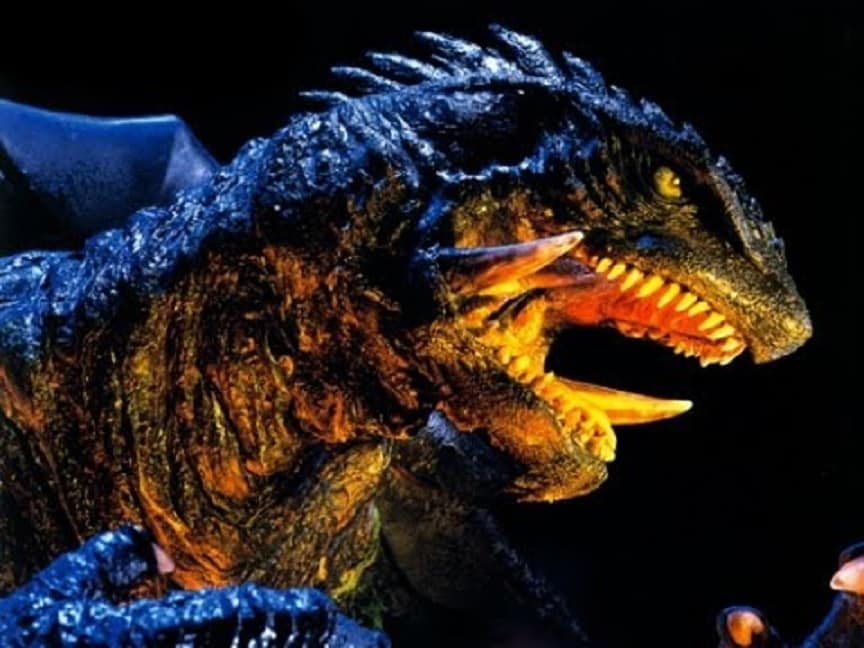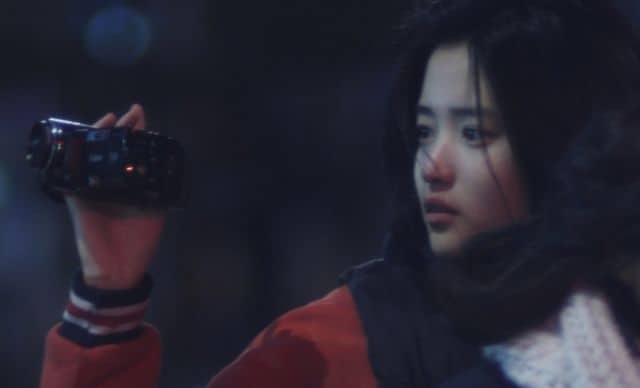With the rebranded franchise in full swing, director Shusuke Kaneko decided to take his time with offering up the final chapter to the critically and culturally well-received series. Taking a full three years to get the entry out to the masses after the rushed schedules of the first two films, this captivating installment, which concludes the beloved Heisei Gamera trilogy, is included in the massive box-set of the entire franchise released by Arrow Video.
Buy This Title

Living in a rural part of Japan, high-schooler Ayana (Ai Maeda) grows up resentful of the fact that her parents were killed on Gamera's defense of Tokyo against Gyaos several years earlier. When a neighborhood prank causes her to come into contact with a strange egg in a local cave, she takes it home and cares for it. After realizing that there are more Gyaos lurking in the wild, ornithologist Mayumi Nagamine (Shinobu Nakayama) and Asagi (Ayako Fujitani) are called in to determine how to go about a course of action to prevent them from reaching Japan, only for Gamera to be tracking them and killing them despite showing little regard for saving humanity in the process. With these fueling Ayana into controlling Iris in a struggle against Gamera, the fate of the world rests on discovering a way to stop the creatures from spreading their war to humanity.
On the whole, “Gamera 3” is an incredibly well-made if wholly bland kaiju film. The most pressing problem is that there's such a wooden and measuring pacing that it can be slightly off-putting. With Kaneko focusing on spelling out his and co-writer Kazunori Ito's apocalyptic storyline, regardless of how impressive and deep this is, the end result is boredom for long stretches of time. Having large sections here dominated by military conference meetings to determine the true threat posed to humanity by the monsters, the mythological connection between the appearance of Gamera and Gyaos due to the Mana levels present at the time and the need to build up Ayana's hate for killing Gamera slows the film down considerably. This is incredibly complex to have as a third-part in a franchise and easily could've had a few storylines and subplots removed entirely to speed things along.
Moreover, this brings about several other factors to hold this back. Kaneko and Ito mix together Japanese mythology in regards to the creation of Gamera and Gyaos and attempt to meld Iris onto it in terms of fulfilling a truly apocalyptic scenario with the monsters. This makes no sense as the outlandish concepts of Mana as a fuel source for Gamera to feed on to give him the strength to fight off Gyaos and Iris feels completely against and at total odds with the grounded atmosphere. It doesn't help that most of this is derived from the banal speeches full of pseudo-cryptic nonsense that never once gives off their own stake in the final outcome. Ushering in the downfall of humanity predicted thousands of years earlier and realizing the monsters are the cause of it is fine, but there's nothing about what Asakura or Kurata has in this which makes their characters feel even more out-of-place in the grand scheme of the story. All in all, these are the majority of what holds “Gamera 3” back.
While on the whole generally impressive, a few weak areas in effects director Shinji Higuchi's work do slip through. Firstly is the design of Iris, which is inherently beautiful to look and unbelievably realistic in their movements but draws attention to their modernized aesthetics. Considering this is supposed to be a mythic, almost ancient creature, it fails wholeheartedly to convince it belongs in that timeframe. As well, the flying form is much too like a Western version of an angel with its wings outstretched floating against the clouds and moonlight in the background. There's nothing to make it believable that these flimsy outstretches of skin are anywhere near capable of supporting such a bulky being, which can also be said of the baby version. The stuttering movements, static design and plastic sheen give itself away at every turn and make it's scenes a true disappointment.
Still, when the rest of the film is considered, “Gamera 3” is the top of the genre. Despite all the criticism of the design, Iris is undoubtedly among the most beautiful creations in the scene, while the fleeting glimpses of Gyaos are impressive and realistic. The new Gamera design, redesigned slightly with a smaller head, larger tusks and a less rigid collection of back-plates that shuffle about with each step and turn, is the most dynamic and realistic version of the creature to date. The combination of miniature and computer graphics is immersive as well, featuring impossibly realistic scenarios for the monsters battling each other in the middle of the city or inside a massive train station which combine to form engaging sequences. Graced with Kaneko's subtle approach to the human drama with the weaving together of the various storyline elements at play that get built up over time, the end result is a professional and competently-created slice of kaiju goodness whenever they're on-screen.
As there's much to like in terms of the creative aspects and technical side to things, “Gamera 3” is enjoyable even with the few flaws that crop up which might be overlooked entirely. Any fans of the previous Heisei Gamera installments, kaiju fans in general or viewers who can look past the ridiculousness of the genre to appreciate the craftsmanship on display are well-advised to give this one a look.















